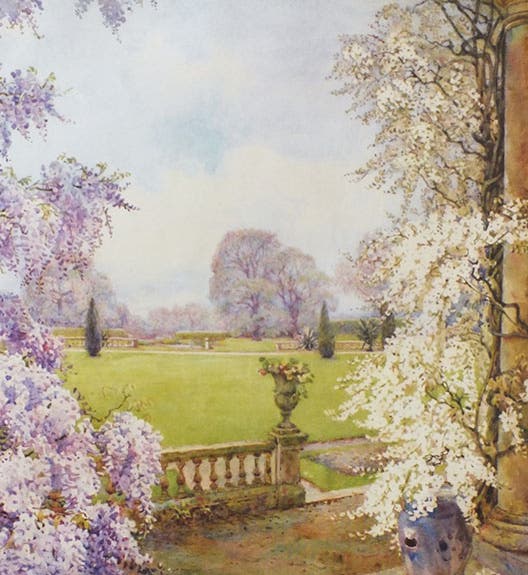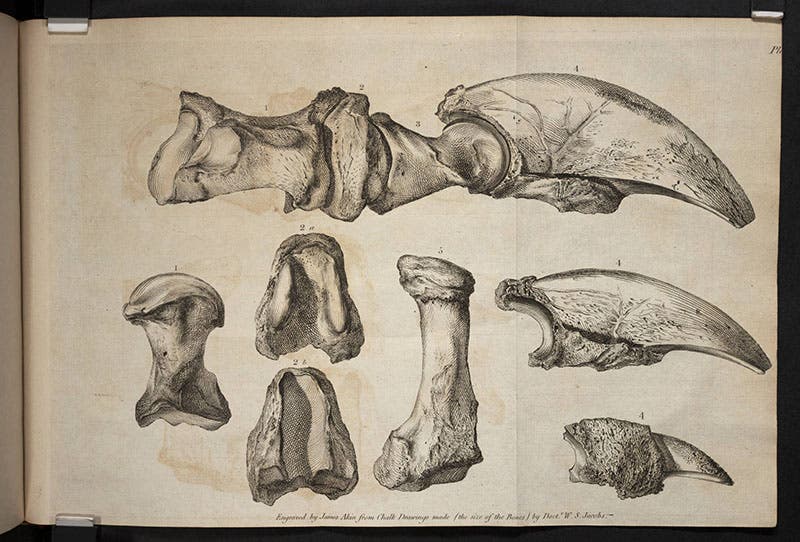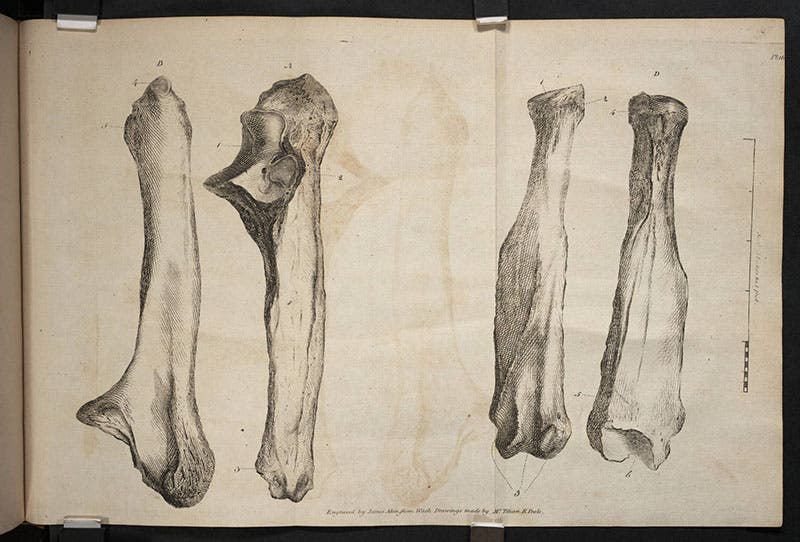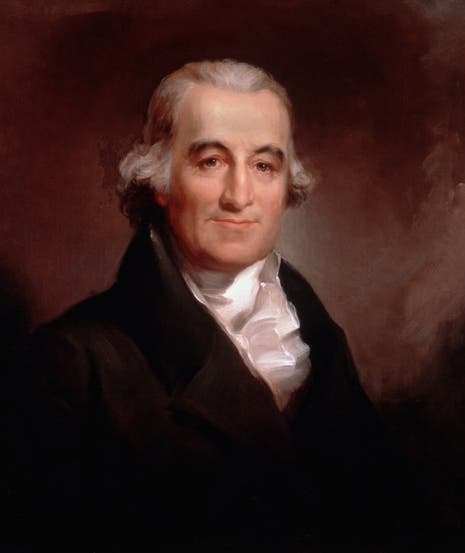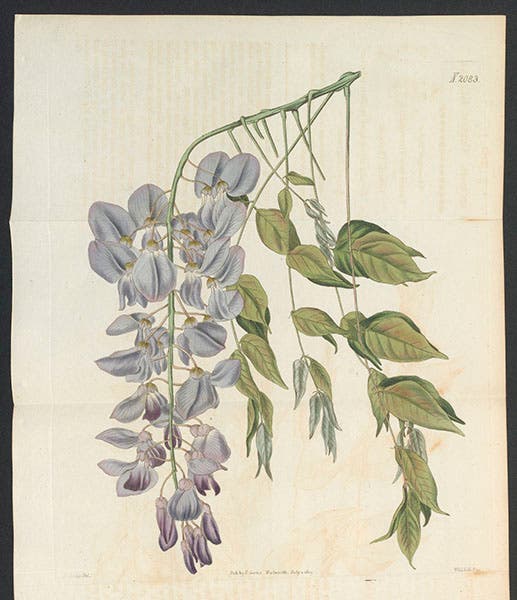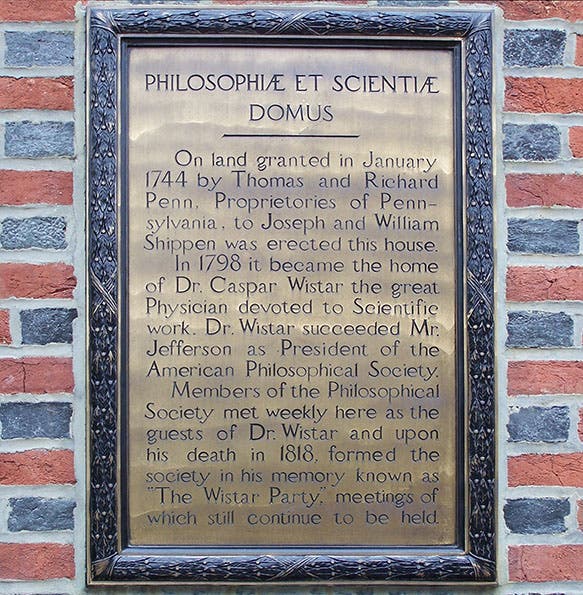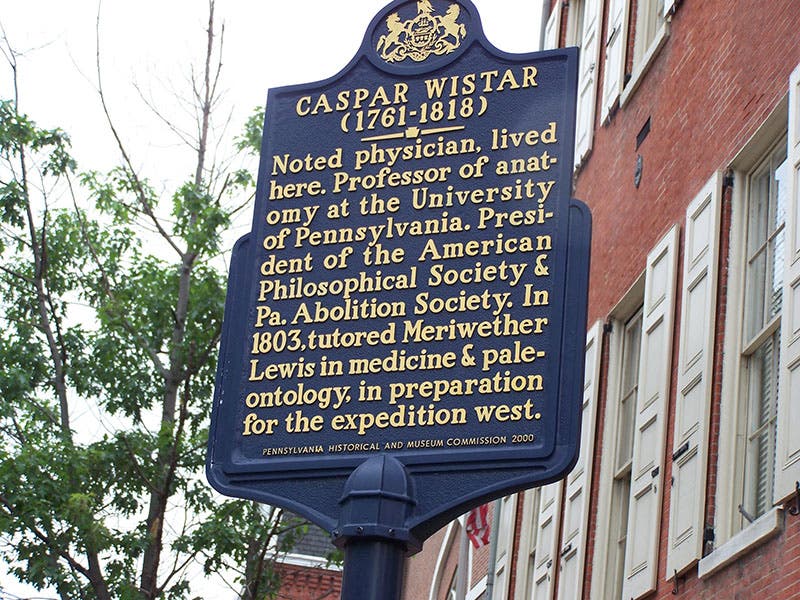Scientist of the Day - Caspar Wistar
Caspar Wistar, an American physician and anatomist, was born Sep. 13, 1761. He received his medical degree at Edinburgh in 1786, and then returned to his homeland to become one of many scientific luminaries who thrived in the intellectually vibrant milieu of Philadelphia at the end of the 18th century. When Thomas Jefferson, in 1797, announced the discovery of the remains of a large quadruped in Virginia, which he called a Megalonyx, or “Giant Claw,” thinking it was a large, cat-like animal, Wistar wrote an anatomical article on the fossils, suggesting a resemblance to a large sloth, which turned out to be correct. The drawings of the fossils that accompanied Wistar’s paper (second and third images) were done by Titian Peale, of the famous Peale family, then 18 years old. However, young Titian would die even before his drawings were published; the second and more famous Titian Ramsay Peale was born in 1799.
It is said that Wistar was asked by Jefferson to advise Meriwether Lewis about collecting before he and William Clark set out on their famous expedition. Or so it is claimed by a historical marker outside his house in Philadelphia (seventh image).
After Jefferson died, Wistar succeeded him as president of the American Philosophical Society. After Wistar died, his botanist friend Thomas Nuttall named a beautiful flowering vine after Caspar: Wisteria, using an alternate spelling of his last name. Because there was another Philadelphia family that spelled their name Wister, it has been claimed that Wisteria was named after this family, but most of the evidence suggests that it was Caspar who was commemorated by the flower. We show here an engraving of Wisteria from Curtis’s Botanical Magazine (fifth image), made from a painting by the indefatigable Walter Fitch. This is the showier Asian species, W. sinensis, but since it had been introduced to the colonies in the 18th century, it seems legitimate here.
In his later years, Wistar held weekly gatherings at his home, which came to be known as Wistar parties, and which continued at other locations after his death. Another plaque, this one mounted right on the house, tells us about the Wistar gatherings (sixth image). His house, at 238 S. 4th street in Philadelphia, is just two blocks east and south of the American Philosophical Society, which houses a splendid portrait by Thomas Sully (fourth image).
Our opening image is a beautiful painting by Edith Adie of the garden entrance at Dyrffyn House, near Cardiff, draped with Wisteria; the painting, done in 1923, is owned by the Royal Horticultural Society.
Dr. William B. Ashworth, Jr., Consultant for the History of Science, Linda Hall Library and Associate Professor emeritus, Department of History, University of Missouri-Kansas City. Comments or corrections are welcome; please direct to ashworthw@umkc.edu.

